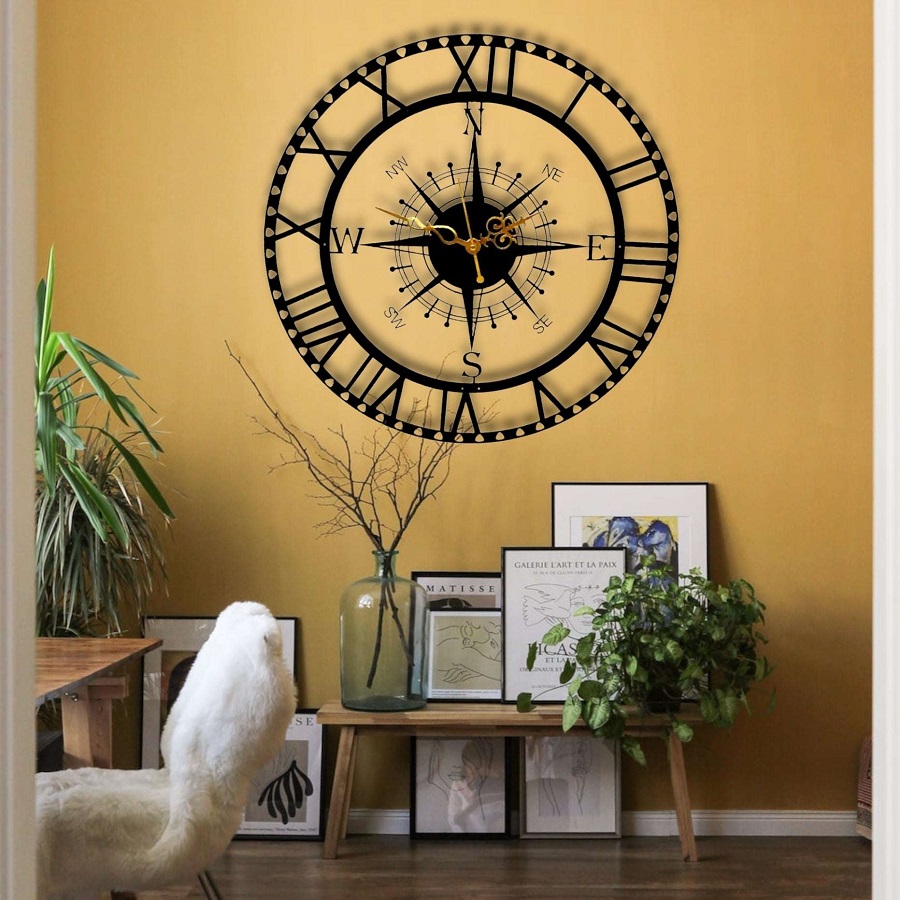Time is a constant presence in our daily lives, and its representation through wall clocks has evolved from mere functionality to artistic expression. A well-designed wall clock not only serves its primary purpose of keeping time but also contributes to the ambiance and aesthetics of a room. The creative possibilities for wall clock designs are virtually endless, allowing homeowners, designers, and decorators to express their unique style through this functional yet decorative piece. This article explores the art of timekeeping, discussing how creative wall clock designs can enhance your living spaces, adding personality, charm, and an element of surprise.
The Evolution of Wall Clocks as Decorative Pieces
From Functional to Decorative: The Shift in Design
In the early days, wall clocks were solely functional tools used to tell the time, often featuring basic designs that prioritized accuracy over aesthetics. With the advancement of technology and the proliferation of other timekeeping devices, such as smartphones and digital gadgets, the role of the wall clock has transformed. Today, wall clocks are seen not just as time-tellers, but as significant elements in home decor. Designers and manufacturers have begun to experiment with various materials, shapes, and mechanisms to create timepieces that double as artistic focal points in a room.
Historically, wall clocks were large, often heavy, mechanical devices with intricate gears and pendulums. Over time, as society became more design-conscious, these clocks started to incorporate ornate wood carvings, brass accents, and even gold leafing. Today, however, clocks come in a variety of materials—wood, metal, glass, and even acrylic—and often feature bold, minimalist designs or abstract, artistic concepts that challenge the conventional view of timekeeping.
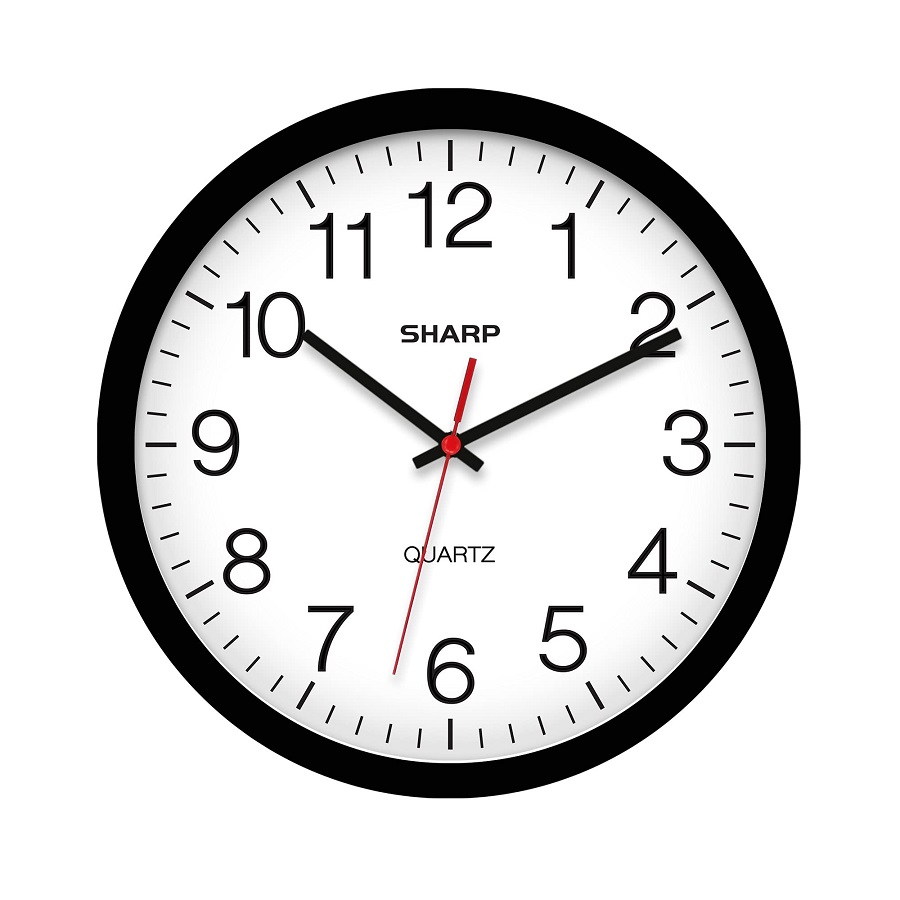
The Role of a Wall Clock in Home Design
A well-chosen wall clock can serve as a focal point that ties together a room’s aesthetic. It offers a unique way to showcase personal style, whether that’s through an ultra-modern design or a vintage-inspired piece. Wall clocks can highlight the room’s theme—be it rustic, industrial, minimalist, or bohemian—while also adding a sense of symmetry and balance to the space. For instance, a clock with a vintage design featuring Roman numerals and a distressed finish might complement an old-world charm in a room, while a sleek, geometric clock can enhance the modernity of a minimalist living area.
Furthermore, a wall clock can bring harmony to a room by incorporating colors and textures that blend seamlessly with the overall decor. For example, a clock with a wooden frame may integrate well with other wooden furniture pieces, while a metallic clock can add a pop of sophistication to a room with neutral tones. Choosing a clock that reflects your personal style can bring a sense of cohesiveness and individuality to your living space.
Materials and Styles: A World of Creative Possibilities
Wood: A Classic Choice with Versatility
Wooden wall clocks offer a timeless charm and warmth, making them a popular choice for many homeowners. Whether it’s a rich, dark walnut or a light, natural oak, wood is a material that can be adapted to suit a wide range of design preferences. A wooden clock may evoke a traditional or rustic aesthetic, but modern wood clocks with clean lines, geometric shapes, and minimal designs can easily complement a contemporary or Scandinavian-inspired interior.
Wooden clocks are also highly customizable, often featuring different finishes or combinations of materials. For example, a clock may combine wood with metal accents to give it a more industrial look or pair wood with glass for a sleek, sophisticated appearance. The natural grain of the wood itself adds texture and character, making each clock unique. Whether it’s a minimalist wall clock with a simple wooden face or an intricate design featuring wooden numerals and hands, wood is an excellent medium for creating a clock that resonates with personal taste and the overall feel of the room.
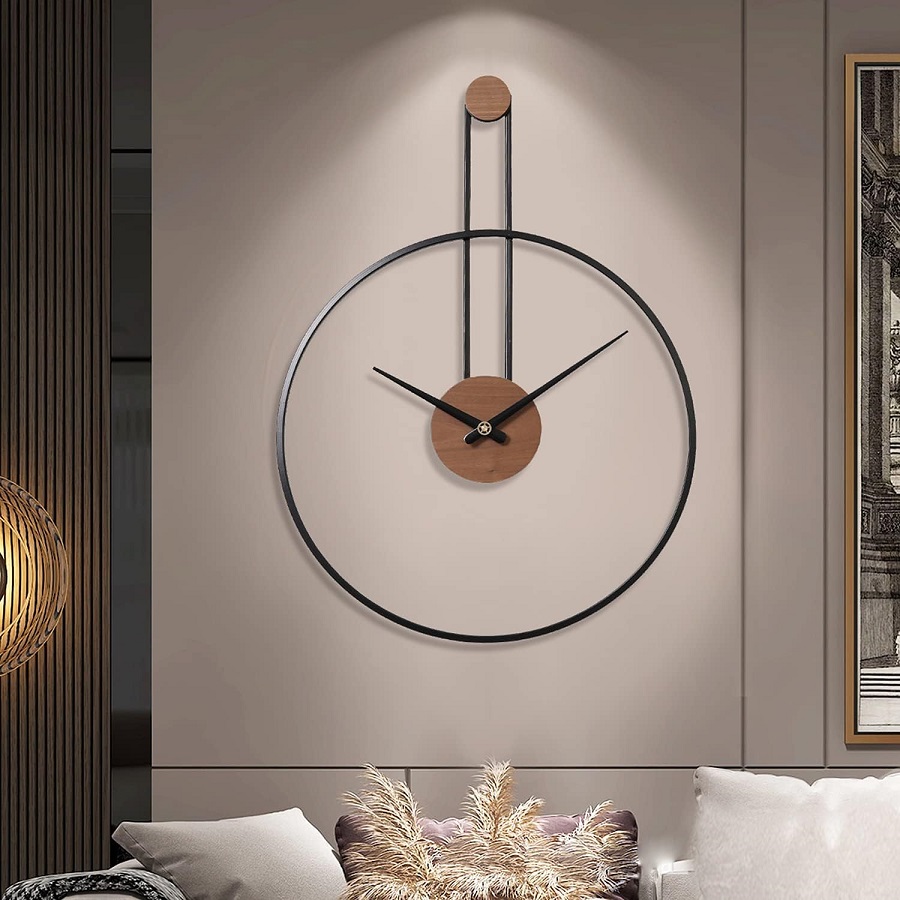
Metal: Sleek and Modern Designs
Metal wall clocks often exude a sense of sophistication and are ideal for contemporary or industrial settings. Whether it’s stainless steel, brass, copper, or wrought iron, metal clocks can range from sleek, minimalist designs to more ornate and vintage-inspired creations. Metal clocks tend to be more durable and resilient, offering a modern aesthetic that works well in loft-style apartments, office spaces, or living rooms that feature exposed brick walls and metal accents.
The versatility of metal as a material allows for a variety of design expressions. Large metal clocks with Roman numerals or abstract patterns can serve as a centerpiece, while smaller metal wall clocks in subtle hues can seamlessly fit into a more understated decor. Additionally, metal clocks can create a striking contrast against soft, textured materials like wool or velvet, making them effective at drawing attention and creating visual interest.
Glass and Acrylic: Transparent Elegance
Glass and acrylic wall clocks offer a sense of transparency and lightness, allowing them to blend effortlessly into modern and minimalist interiors. These materials are often used in contemporary designs, with clocks that have clean, sharp lines and a high-gloss finish. Glass clocks may incorporate elements like backlighting or frosted finishes to enhance the visual appeal, while acrylic clocks can offer a more playful and experimental aesthetic with vivid colors and bold, geometric shapes.
Glass and acrylic clocks are often designed to appear as though they are floating on the wall, adding an ethereal quality to the room. These clocks can be particularly striking when paired with sleek, modern furniture or used to complement spaces with large windows and lots of natural light. The transparency of these materials helps them remain visually subtle, but their modern designs ensure that they make a statement without overwhelming the room.
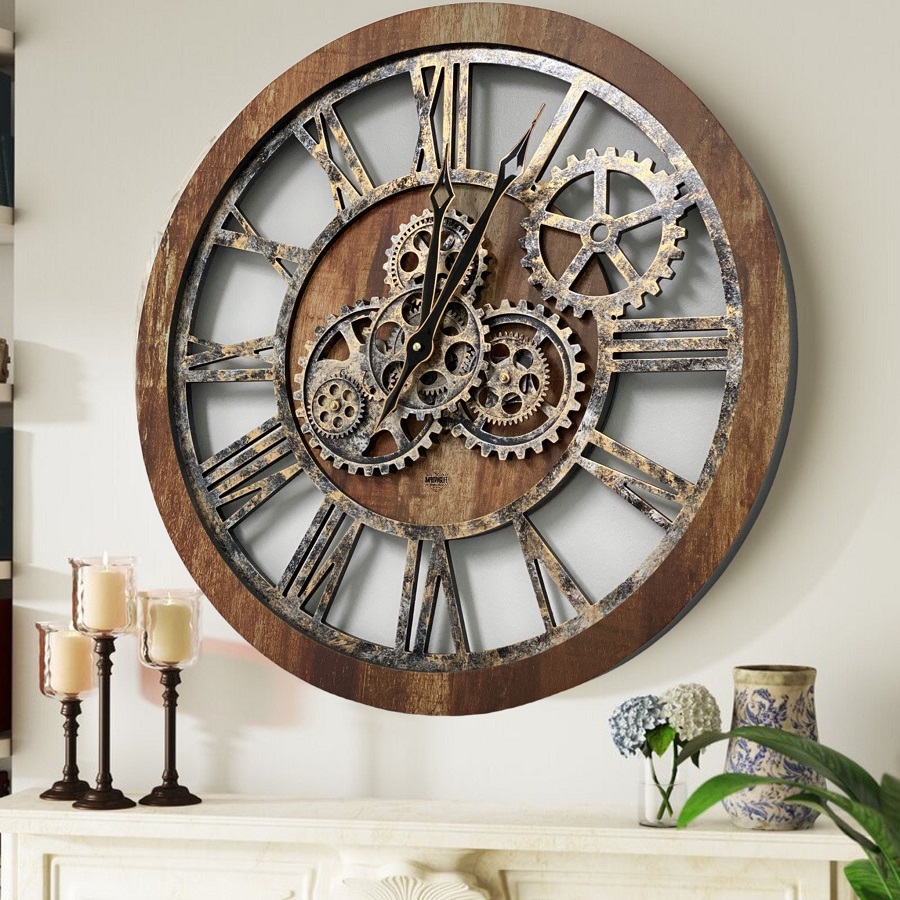
Color and Shape: Defining Your Clock’s Character
The Impact of Color Choices on Wall Clocks
Color plays a crucial role in defining the mood and style of a wall clock. From bold, eye-catching hues to subtle, muted shades, the color of a clock can dramatically impact the overall look of a room. A clock with bright colors like red, blue, or yellow can act as a vibrant focal point in a playful or eclectic space, while more neutral tones like black, white, and gray lend themselves well to minimalistic designs.
Boldly colored clocks are perfect for adding personality and creating a sense of energy in a room. A vibrant turquoise clock, for example, can brighten up a room with dark or muted tones. Alternatively, a clock in a soft pastel color, like blush pink or light mint green, can add a calming effect to a bedroom or a nursery. The color you choose for your clock should harmonize with the other elements in the room, creating a visual flow that brings balance and cohesion to the space.
The Power of Shape: From Circular to Abstract Designs
Wall clocks come in a wide variety of shapes, from the traditional round or square designs to more abstract and unconventional forms. The shape of a clock can significantly influence its function as a decorative piece and the overall aesthetic of the room.
A classic round clock is a timeless option, offering a sense of balance and symmetry. However, for those looking for something more unique, abstract or asymmetrical shapes can create a sense of movement and intrigue. For example, clocks with starburst patterns or irregular geometric shapes may appeal to individuals who prefer bold, artistic designs. These clocks often serve as conversation pieces, catching the eye with their unusual forms.
Square or rectangular clocks are another popular choice, especially in contemporary and modern settings. These designs can feel more structured and formal, making them a great fit for spaces that prioritize clean lines and organization. However, no matter the shape, the key is ensuring that the clock complements the design of the space rather than distracting from it.

Functionality and Design: Blending Art with Practicality
Silent Clocks: The Art of Quiet Timekeeping
While the aesthetic qualities of a wall clock are essential, the functionality of the clock remains important, particularly when it comes to noise. Traditional wall clocks, especially those with ticking mechanisms, can sometimes be distracting, especially in spaces like bedrooms or offices where tranquility is desired. In response, designers have created silent wall clocks that use sweep movements instead of ticking mechanisms. These clocks operate quietly, ensuring that the visual and functional appeal of the clock does not compromise the atmosphere of the room.
Silent clocks are often favored in spaces where focus and concentration are important. In a study or library, for instance, a quiet wall clock can provide the benefit of timekeeping without disturbing the peace. Additionally, for bedrooms or relaxation areas, the absence of ticking can create a serene environment, allowing the clock to serve as a decorative element rather than a source of disruption.
Multifunctional Clocks: Merging Timekeeping with Art
In addition to traditional timekeeping, some wall clocks are designed to offer additional functions, such as temperature readings, humidity levels, or even lighting features. Multifunctional clocks are particularly useful in spaces where convenience is key, such as kitchens or offices. These clocks often combine the beauty of a decorative timepiece with practical features that can help maintain a comfortable living environment.
Some modern designs also incorporate smart technology, allowing users to control their clocks via smartphone apps or voice assistants. These clocks may feature digital displays, alarms, and timers, blending contemporary technology with traditional wall clock designs. This fusion of art and technology ensures that wall clocks can remain not only relevant in today’s tech-savvy world but also serve as artistic and functional additions to any room.
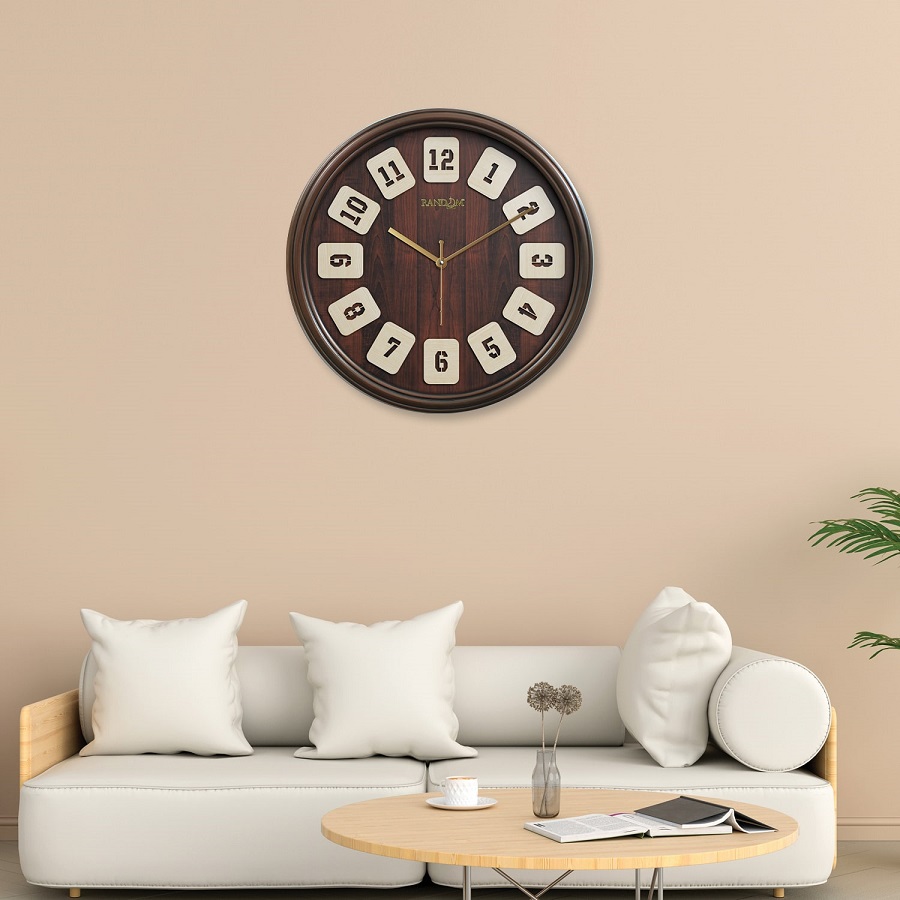
Conclusion: Choosing the Right Clock to Elevate Your Space
When it comes to wall clocks, the possibilities are endless. Whether you prefer the warmth of wood, the sleekness of metal, or the transparency of glass, the right clock can enhance your home’s decor and bring a personal touch to the space. By considering factors such as materials, colors, shapes, and functionality, you can choose a wall clock that reflects your unique style while fulfilling its primary purpose of timekeeping. Ultimately, a well-chosen clock not only tells time but also tells a story—one that adds character, charm, and creativity to your living space.
